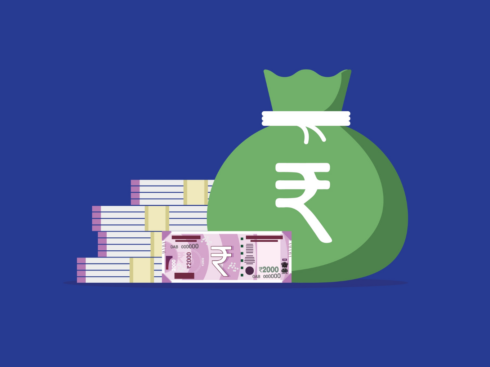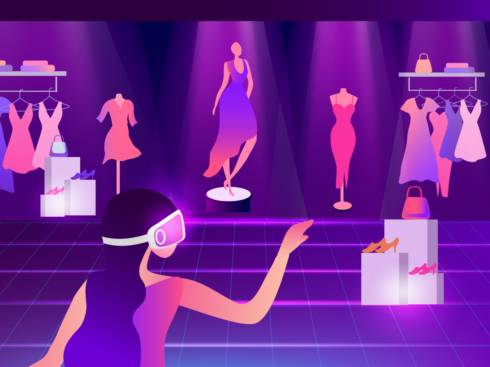
There is an intriguing study being carried out on potential loan defaulters which has nothing to do with their financial status, credit score or spending habits. If the results of initial analysis are to be believed, the study claims that people who keep their mobiles always charged are less likely to default on their EMI payment, than those who wait for the battery to drain out completely.
Now the latter bunch of people would also include those who believe the technical myth that a battery should first get completely discharged, before being put to charge again. Nonetheless, the results point toward a critical piece in the loan puzzle, how to know (psychologically) whether the loan seeker is going to repay it on time or not, that too based on factors that are not related to money in any manner. However, they are related to the person seeking the loan and his habits.
So habits are the keys to ensuring a person’s likelihood to doing something, because habits are hard to change.
Similarly, prediction models in retail, that gauge a person’s likelihood to buy, do so using non-transactional customer data. Some may confuse the likeliness to buy with the intent to buy, but let me clear the mist:
You are checking out a product which might indicate you wish to buy it. However, you may still not buy it, or probably plan to buy it the coming month. The reason could be any – say, your credit limit for the present month wouldn’t allow you to make this purchase. So, even with an intent to buy, your likeliness to buying is nil, at least for this month.
Now that we are clear on the two concepts, let’s move ahead with predictive analysis.
How Prediction Models Work?
Predicting for first-time buyers
The model would compare the pre-purchase behavior of prospects with that of previous customers bought something. The model makes use of attributes like email opens, pages browsed, purchase route, calls to action clicked, etc.
Prospective buyers whose behavior matches most to the previous buyers are labeled as ‘high-affinity buyer’. Marketers pursue this new list of prospects with customized messages to close maximum number of sales.
Predicting for repeat buyers
Anticipating likelihood for repeat purchases takes into account data from previous transactions and also the interactions that happened before the purchase was made. This is similar to the model for the first-time buyers.
However, there is additional information populated into the database from the first purchase of these customers. This consolidation enhances the accuracy of the model substantially as it incorporates data about repeat purchases, returned packages and also interaction with the customer service.
A live example




So it is something like this:
“Hi Selena,
It’s been a while since we last spoke. I’m thrilled to tell you that we have launched a new style of cashmere shrugs that I feel you’ll love. They are similar to the pink one you bought last winter, but in a much flattering cut. I’m sending you one from this collection, in your size. Try it on and let me know how it fits and feels.
Jess
Your personal stylist”
Now who wouldn’t want to treated like that?
What Would You Need for Predictive Analysis and Why?
A mobile-first approach. Why? Because now a customer’s journey to purchase is not a linear path, but a game of connect-the-dots where there are multiple touch-points AND mobile lies at the heart of trajectory.
Once you get that, you’ll have access to a plethora of data points. From app usage stats to social media activity, you have everything you need to decipher the mysterious mind of a shopper.
The era of working on the data from government bodies and financial institutions is long gone, and so are gone the times of using intuition to solve conversion issues. So what’s left is large amounts of data and unique correlation insights which can help you pick various shopping habits that people have and leverage them to your benefit.
Benefits of Predictive Analysis in Retail
Targeted discounts (and less discounts)
There are three kinds of buyers: first, who want to buy with only a discount; second, who buy regardless of the availability of the discount; and third, who can sway either way. As a marketer, I know only 20% of the customer population is discount-junkie and 15% usually buys without a discount, while most of them are not bothered by the presence of a deal. Most marketers, like me, know that stuff too. Then why do they offer blanket discounts which result in a stoop in overall profit margins?
I would call that laziness. Laziness to understand and analyze a lead individually and cater to its unique needs.
There is one thing terribly wrong with discounts. If you give out on certain occasions every year, people start expecting them and then, they wait for that discount period to arrive to buy. They won’t buy without that discount. So that’s a bad habit we have exposed our customers to.
So how should the discounts be handled? Here is your answer: 7 ways of discounting that doesn’t devalue your product
This article, or I, do not say that discounts or other incentives are wrong. But, they should act like a sweetener in tea, and not the tea itself. Discounts must act as an encouragement. What I mean is that if you see a customer abandoning his cart, then you can offer a discount; or as a sign up reward to acquire a new customer. By letting go off incentives, you can focus your attention on personalized attention to the individual needs and wants of a customer through recommendations and reminders.
This way, you’ll be able to maximize both revenue and profitability from every customer.
Detailed customer segments to focus on
Like I said, the time of segregating customers based on demographics is no longer here. Focusing on behavior and shopping patterns gives marketers a deeper insight on how to reach the customer in a subtle and strategic way, because reaching and acquiring customers is expensive. You will not just know what they purchase, but how they do so, how they make a choice and settle on something. You’ll get to understand what makes them open their wallets for you and also, what makes them say good things about your brand and push their near and dear one into buying from you.
Apart from choosing the right people, you increase your chances of getting heard, listened and followed, which immensely improves your ROI. Being more relevant and useful helps marketers cut on their dependency on deep discounts.
Customer-centric approach
What happens in a stock-clearance sale?
First, most customers do not find the product they are looking for, at least not in the right specification. Second, the company clears its warehouse in loss because it waives off a huge sum over all old inventory. Doesn’t sound like a winning situation for any of the two parties.
That’s because it is merchandise-centric approach, not a customer-centric one. It doesn’t make the customer feel special in anyway. Plus, it sensitizes the customers in the wrong way. As I said, they will pick up your pattern, delve into a similar habit and then will wait for that big annual sale. You never know, some customers buying in that period might not even need a 55% off. They could have still bought at 25% or may be at no deal at all.
Therefore, from a business point-of-view you get three huge benefits from predictive analysis:
- Incremental margin(from those who are motivated to buy)
- Incremental revenue(from those who initially had no incentive to buy)
- Reduction in overstock(better inventory management)
Mistakes to Avoid
There is no marketing initiative that cannot go wrong, not even predictive analysis. This article lists some of the gaffes one can easily avoid with a little caution. A few important ones are listed below:
- Have a goal in mind before beginning to connect the dots.
- Do not proceed with the campaign unless you have all required data points.
- Spruce out the data that may mess with your insights and cloud your judgement.
- Launch and move with the speed of lightning because the content is dynamic and if you delay, the situation might have changed for your plan by then.
- Since every business is different, do not believe the subject matter experts or research. They are all based on stale data.
Conclusion
Traditional model of customer segmentation utilized their demographics, attitudes, or buying preferences. It has its own benefits, but the technology and wants of consumer have made them obsolete. Predictive analytics, on the other hand, unravels hidden patterns in the data that helps marketers view the same data in a different light and thus, approach the concept of customer lifecycle management from a new perspective.
The segmentation done using this approach is much more nuanced and precise so much so that you can predict if a prospect will buy from you or not, if he/she will accept your offer or not, or if he/she will stay loyal in the long run. This is a complete win-win situation for both customers and companies leading to a more profitable and longer relationship based on mutual trust.
So if you have dreamed about knowing beforehand what the customer will buy, what to stock in more quantity, how to resolve customer issues before they even rise or determining how much revenue would that customer bring in his/her complete association with you, then here is your chance. With Predictive Analysis.
Download an interesting research on what works (and what doesn’t) in email marketing for ecommerce by TargetingMantra.


























